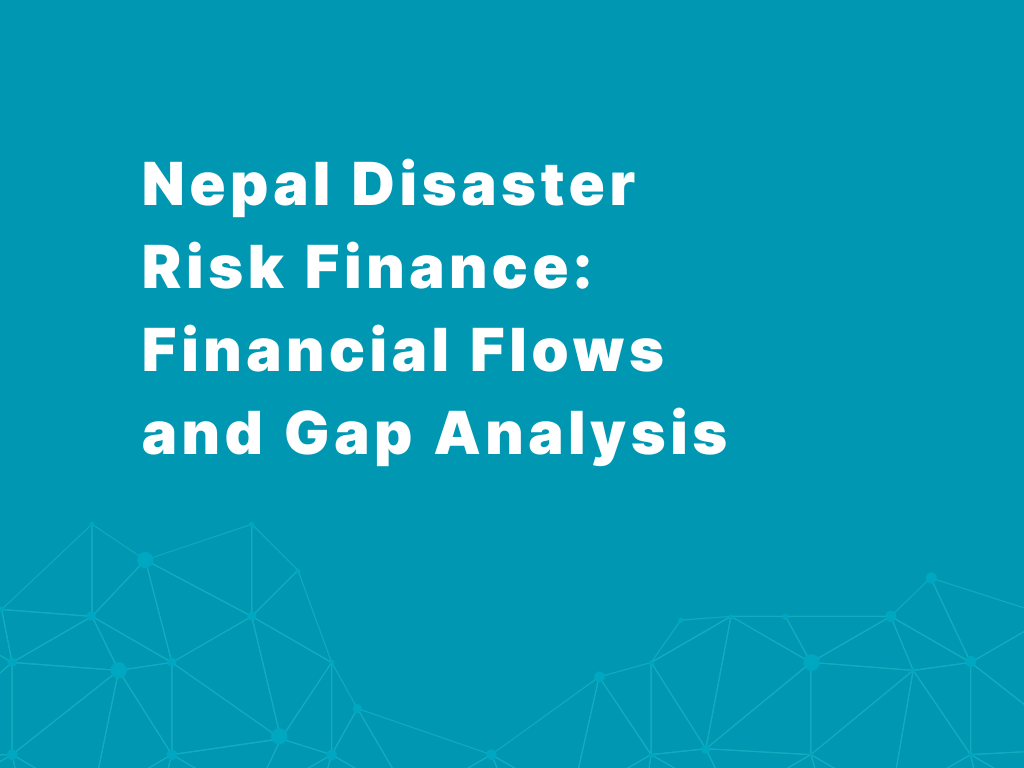Nepal Disaster Risk Finance: Financial Flows and Gap Analysis
In recent years, Nepal has experienced a series of recurrent and large-scale disasters, from earthquakes and floods to pandemics and landslides that have underscored the urgent need for a more coordinated and well-financed disaster risk management (DRM) system. While various actors government, development partners, civil society, and the private sector, have contributed to disaster risk reduction (DRR) and emergency response, there remains a fragmented understanding of how financial resources are mobilized, allocated, and spent across the DRM cycle.
This study seeks to fill that gap by systematically analyzing the flow of disaster-related funds across different hazards, sectors, actors, and phases of preparedness, response, recovery, and reconstruction. Drawing on existing secondary data and guided by an inclusive stakeholder engagement process, the study will map current financing mechanisms, identify critical funding gaps, and explore opportunities to strengthen Nepal’s disaster risk financing architecture.
This study is being led by Team Lead Madhu Sudan Gautam, Senior Experts at the Institute for Frontier Studies (IFS), along with Navin Dahal and Dinanath Bhandari. The assignment has been commissioned by the Start Network to support the development of the Early Action Protocol (EAP) for the Multi-Hazard Early Warning System (MHEWS) in Bagmati Province, Nepal.


